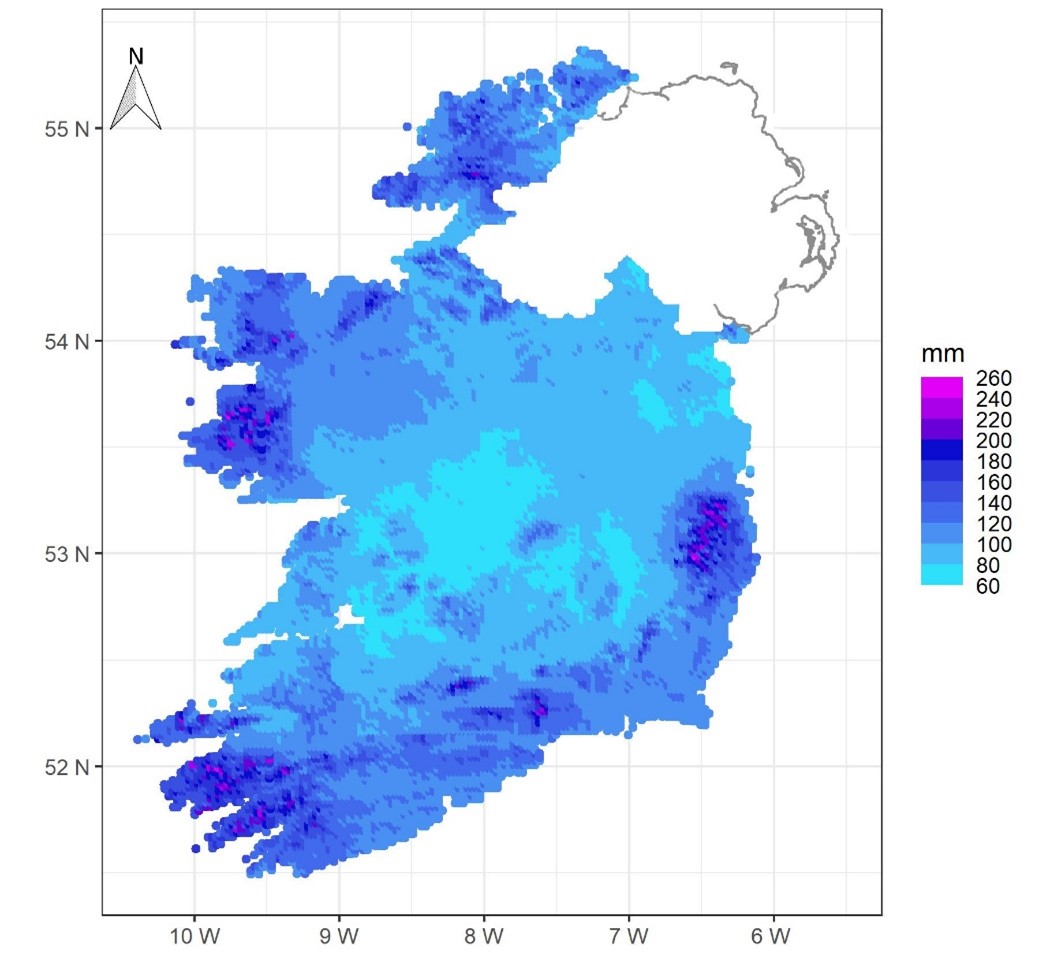The climate of Ireland is changing. Consequently, the Department of Housing, Local Government and Heritage funded this project to update ‘Climate maps and data to support building design standards in Ireland’.
The goal of this research was to calculate return values for various return periods (2, 5, 10, 20, 50, 100 and 120 years) for specific rainfall thresholds ranging from 15 minutes to 24 hours (15 and 30 minutes and 1, 2, 3, 4, 6, 12 and 24h) and from 1 to 25 days (1, 2, 3, 4, 6, 8, 10, 12, 16, 20 and 25 days), based on a denser network of stations with up-to-date data and according to the depth-duration-frequency model described by Fitzgerald (2007). The new estimations of rainfall intensities will be used in building design in support of Action 203 of Ireland’s Climate Action Plan 2021 – Develop specific climate maps and data for use in building design to enhance resilience in support of climate change adaptation and to support the National Adaptation Framework.
Extreme rainfall events are responsible for major socio-economic impacts and can be hazardous to life. Short-duration and intense localised rainfall events can cause severe flooding. Estimating the return levels of rainfall thresholds for specific return periods has diverse applications, such as informing the design criteria for drainage schemes, sewerage systems, bridges, gutters, and fluvial flood mitigation measures.
The outputs of this research will benefit a wide range of stakeholders currently collaborating with Met Éireann, such as the National Standards Authority of Ireland, the Office of Public Works and Transport Infrastructure Ireland, and the Department of Housing, Local Government and Heritage’s building standards team. This report will also inform policy in delivering key national infrastructure such as housing and building renovation. The results will also be of interest to a diversity of sectors, planners and policy makers to make long, lasting and climate sensitive decisions.
The new estimations of rainfall intensities for Ireland supersede the previous outputs presented by Fitzgerald (2007) and should be adopted by stakeholders. It is hoped that the detailed explanation of the methodology and the clarification of the rationale for the new outputs being more up-to-date than the preceding report (Fitzgerald, 2007) provided here will be of assistance to regulators elsewhere in adopting these new maps in their own jurisdictions.
Read the full report:
Mateus, C., and Coonan, B. 2023. Estimation of point rainfall frequencies in Ireland. Technical Note No. 68. Met Éireann.
Further reading: Fitzgerald, D. L. 2007. Estimation of point rainfall frequencies. Technical Note No. 61. Dublin: Met Éireann.
